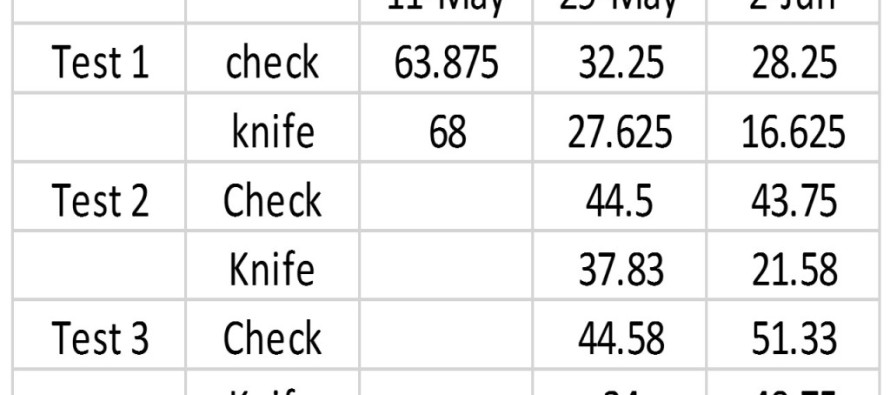New Data Available on Sealing Soils

If you farm old traditional cotton soils, most likely you have recognized that irrigation water tends to run down the row, racing to the tail ditch. If you have noticed this, you have a “sealing soil”. If you are using moisture sensors to trigger irrigation, and you notice that the sensor values remain high after an substantial rainfall or an irrigation event, most likely your soil is sealing.
Surface sealing in the Mississippi Delta typically occurs in soils that have a low clay and organic matter content but have a high silt fraction, i.e., most of our silt loam soils. Surface sealing, from an irrigation management standpoint, is problematic because it can drastically reduce rainfall or irrigation infiltration rates.
New 2015 data from trials where we compared the effects of the subsoiler or paratill to no deep tillage show increased soil available moisture in the subsoiler treatments. Results show more available soil moisture (lower number, remember zero is saturated) in the subsoiled treatments than the non-tilled check. After calculating the average soil moisture or irrigation trigger value, we find that the subsoiled plot values remained lower signifying increased soil moisture than the no deep tillage plots. (Click to enlarge)
 Additionally we have a number of 2015 trials where we are tilling the soil at or near the lay-by timing with a Nichols parabolic anhydrous knife at a depth of 8 to 10 inches. Watermark sensors are installed at 6″, 12″ and 24″ in the tilled, knife plot and the no knife check. Average soil moisture values have been calculated for each test at 5/11, 5/29, and 6/2. Prior to May 11th, we had received limited rainfall. Only after the rainfall events of May 11th did the benefits of the knife become evident. In each test, the plots where we ran the knife showed better water infiltration compared to the untilled check. The lower soil moisture values indicate more moisture available to the crop.
Additionally we have a number of 2015 trials where we are tilling the soil at or near the lay-by timing with a Nichols parabolic anhydrous knife at a depth of 8 to 10 inches. Watermark sensors are installed at 6″, 12″ and 24″ in the tilled, knife plot and the no knife check. Average soil moisture values have been calculated for each test at 5/11, 5/29, and 6/2. Prior to May 11th, we had received limited rainfall. Only after the rainfall events of May 11th did the benefits of the knife become evident. In each test, the plots where we ran the knife showed better water infiltration compared to the untilled check. The lower soil moisture values indicate more moisture available to the crop.
If you are interested, please give us a call. For additional info click here:
https://www.mississippi-crops.com/2014/06/26/is-my-soil-moisture-sensor-broke/





Let me tell You a sad story ! There are no comments yet, but You can be first one to comment this article.
Write a comment